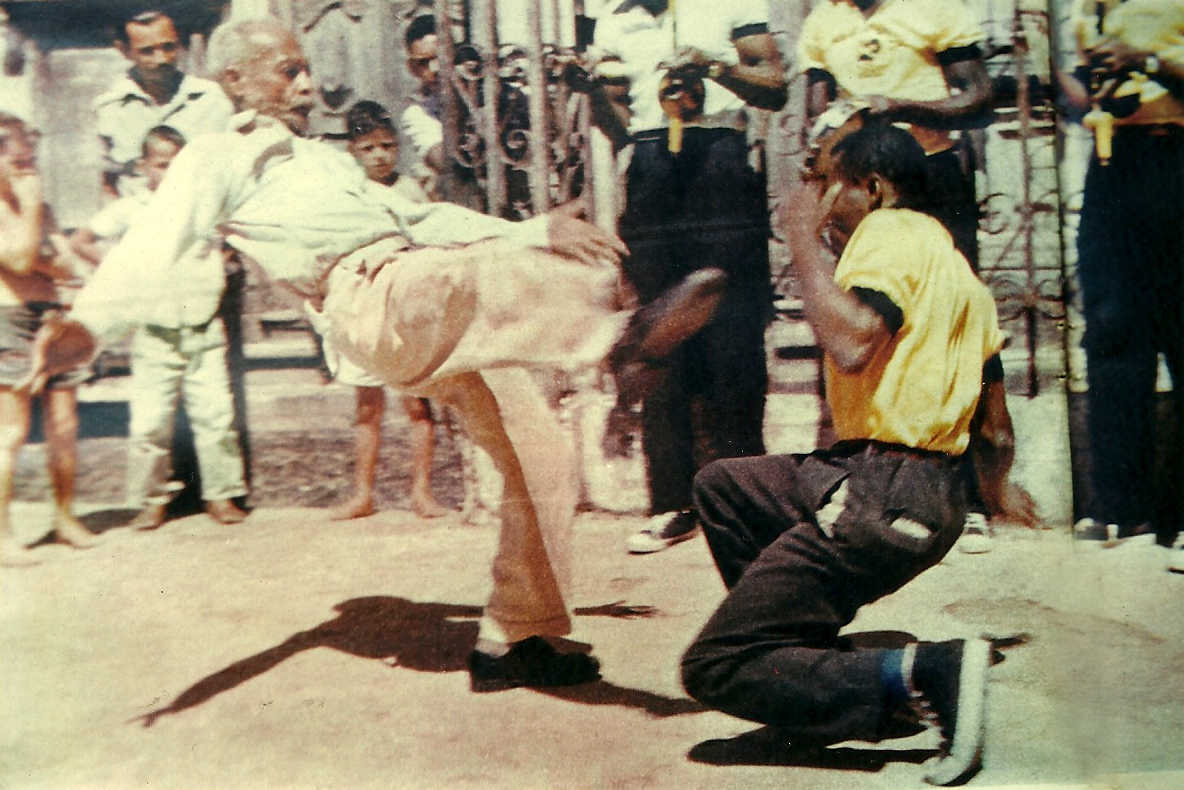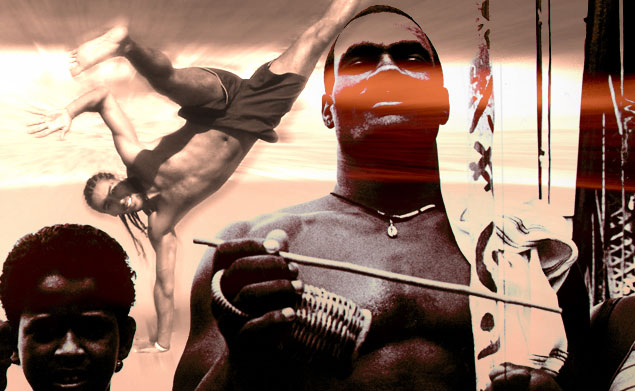In the uplifting documentary ‘Slums, Drums and Capoeira’ Maestre Moraes declared that “Capoeira for me is a way of living. Whereby you reach out to your ancestry, and thus your identity.” Copoeira takes on many titles. It’s an art, a dance, a form of martial arts, a powerful medium of communication, a form of combat, rhythm, acrobatics and music.
There are many theories surrounding the history and orjin of Capoeira. Some argue that it orijinated in Africa and was transported to Brazil by the influx of slaves. Others argue that it’s an art form that orijinated among Afro-Brazilians in “Senzalas” – the living quarters for slaves in Brazilian plantations; while some purport that Capoeira was practiced and used to fend off attacks by Portuguese slavers in Palmares, Brazil’s most infamous “Quilombo” maroon of escaped slaves. While neither of these claims have been supported, there is no disputing the fact that Capoeira is “aesthetically and philosophically an Afro-Brazilian form” as it has been described by former Brazilian Finance Minister Ruy Barbosa. Capoeira provided as a coping mechanism for slaves who were stripped of their culture and identity and not only enables them regain and outwardly express their African roots and culture, but it also allowed for a forging of a new cultural identity, one that utilized the body as a weapon to transcend oppression.
Slaves were brought to Brazil to work on sugarcane plantations from various parts of Africa in 1537. The slaves were imported through the main ports in Bahia, Recife and Rio de Janeiro. While most of the slaves imported to Bahia were from West Africa and those imported to Rio were from the Bantu people, those imported to Recife were from various ethnic backgrounds, which made it difficult for them to come together and revolt against the oppressive colonial Portuguese regime. Despite their differences, some slaves refused to live under colonial control and with the help of the local Native populations, they escaped captivity and bondage by fleeing to far away uninhabited settlements, where they would openly defend and their roots and culture. These newly created communities created “Quilombos’ and comprised not only of escaped African slaves, but also Native Brazilians and Europeans escaping colonial laws and Catholic extremism. This structure of the Quilombos is very representative of the amalgamation of various cultures that is Brazil today.
Within the Quilombos, escaped slaves were not only able to openly celebrate and express their African roots and culture, but they also used elements of that culture, such as the call and response songs and dances, to disguise their developed system of fighting or “jungle war"- today known as Capoeira. Through the use of fast tricky movements and strategic forms of martial arts, Capoeira became not only a symbol of freedom, but also a fundamental tool of self defence against the oppressive colonial regime.
Capoeira utilizes quick strategic movements, with the main component being the “ginga.” The “ginga” or rocking back and forth movement keeps the body in constant movement, thereby preventing one from being still and an easy target. Capoeiristas form a Roda, which is essentially a circle in which opponents face each other, moving to the rhythms of the call and response songs and instruments such as the barimbaus.
Oggi, Capoeira serves as one of Brazil’s biggest cultural exports. From the U.S. to Canada, France and other Latin American and Caribbean countries, Capoeira has taken Afro-Brazilian roots and culture to the world stage. In Brazil, Capoeira also serves as an effective mechanism of change for the young and poor. It grants disenchanted poor youths the opportunity to learn about their roots and culture and also helps to instil discipline and deter many of them from a life of violence and crime. While many of us might not possess the strength, skills and discipline required for the practice of Capoeira, we can all appreciate its historic and cultural significance and the benefits it has and continues to hold for many.



Capoeira, al di là degli occhi umani
Ispirato dalla filosofia di Bob Marley "Nessuno, ma noi stessi può liberare la nostra mente", Orijin è un unico "cultura di marca" che collega tutti i discendenti africani insieme attraverso la sua Marchio di moda e stimolante rivista di influenzare il nostro stile di vita in tutto il mondo ... .non solo indossare Cultura, SHARE Cultura.
Ultimi post di Non cambiare (vedi tutti)
- Prima di Rihanna era Grace Jones - Dicembre 27, 2014
- Marimba: Espressione di libertà, eppure i miei afro-ecuadoriani… - Dicembre 25, 2014
- Chi fa pretesa di essere il Reggae capitale del mondo? - Dicembre 24, 2014





